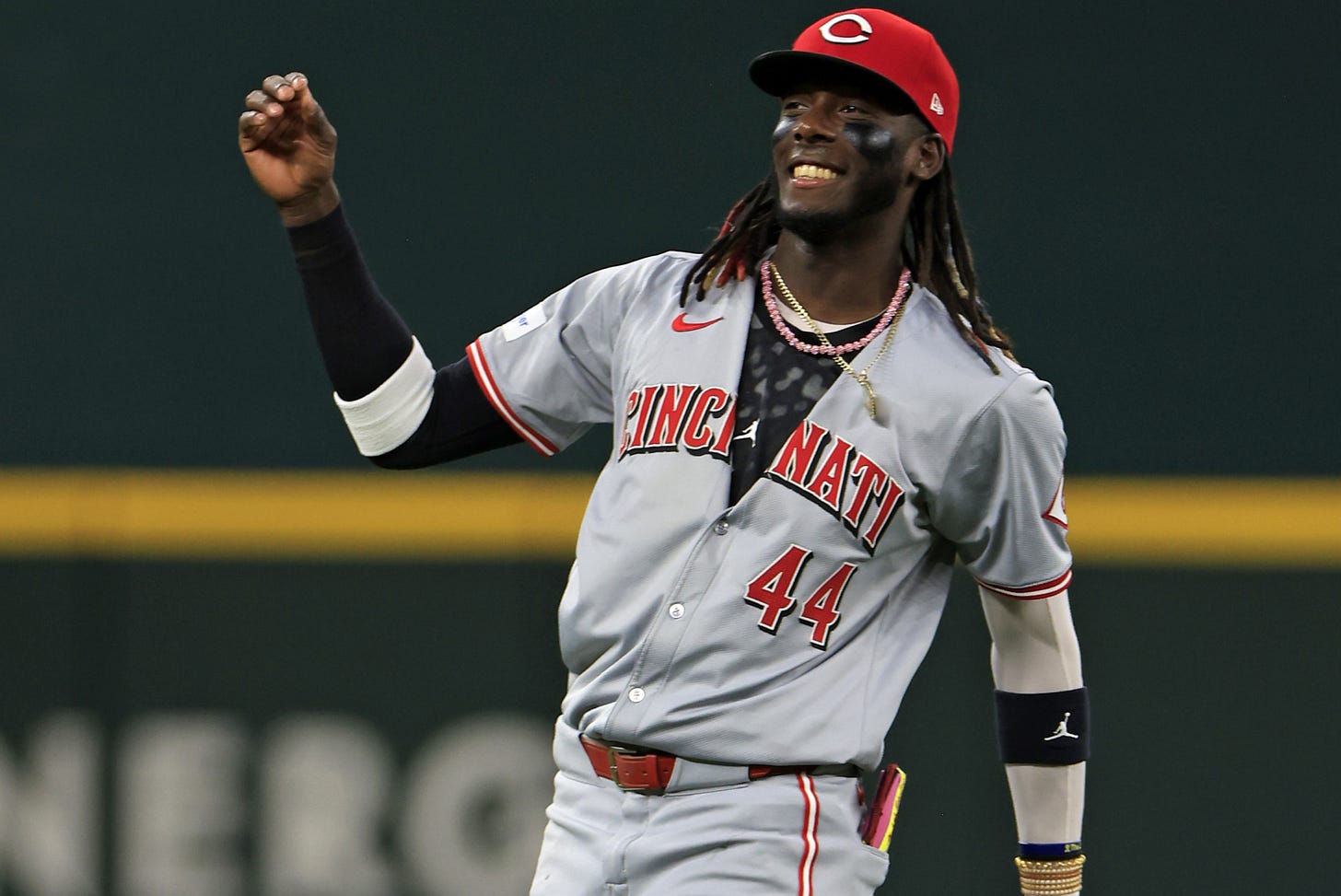Elly De La Cruz Gave Us a Glimpse Last Season. Now We’re Getting the Full Picture.
The Cincinnati Reds' shortstop has graduated from MLB's Most Electrifying to one of its Most Valuable.

Upon being called up to the major leagues on June 6 of last season, the 2023 MLB season quickly became The Elly De La Cruz Show. De La Cruz started racking up some seriously ridiculous feats, such as:
A 458-foot, 114.8 mph exit velocity first career home run
A triple where only 10.83 seconds elapsed between leaving the batter’s box and reaching third base
A 99.7 mph relay throw to nail Corbin Carroll at home plate
Hitting for the cycle in his 15th career game
Stealing three bases over the course of two pitches
Mashing the second-hardest-hit HR of the entire season
…and the list could go on. Around the All-Star Game, I suggested that De La Cruz was so good at so many different things that MLB should have an NBA-style skills competition to showcase all the eye-popping Statcast readouts he’s capable of producing as a hitter, runner and thrower. (Some players are just made for the era of these Statcast measurements, after all.)
But for all of his wild accomplishments, De La Cruz was also a work in progress as a player. He had one of the worst walk-to-strikeout ratios of any batter with at least 400 plate appearances; his isolated power was only 5% better than league average — and his batting average was 6% worse — despite all of that max-EV potential; he hit for an OPS 11% worse than average; and his fielding was negative (-1.7 runs versus average) if we average together Baseball-Reference’s and FanGraphs’ defensive metrics.
Taken together, all of De La Cruz’s impressive tools would have amounted to 2.2 Wins Above Replacement1 if he’d played a full season — essentially the same you could expect from an average starter. The whole was less than the sum of the parts.
But in this, his second MLB season, the 22-year-old is putting together the start of an MVP candidate season. He currently ranks seventh on my overall WAR leaderboard, on pace for 9.5 WAR per 162 team games. And he’s done it by getting better at practically everything there is to improve at:
The only areas where De La Cruz has gotten worse are at hitting line drives and in his fielding metrics relative to position. (His overall defense hasn’t suffered because he isn’t splitting time between 3B — a lesser defensive position — and SS so far this year, unlike in 2023.) And don’t worry, he still has time for all of those highlight-reel games:
In turn, the Reds have also improved a lot. Their runs-per-game differential is up from -0.23 last season to +0.75, and they have a 30% chance of making the playoffs for just the second time in the past 11 seasons.
One of the reasons why the Reds were a difficult team to forecast in 2024 was that it was tough to say how much having a full season of De La Cruz would boost them. Based on last year’s numbers, his impact was not as great as we might have expected from his incredible Statcast feats. But at age 22, it was easy to see him improving a lot in his first full MLB campaign — and if that happened, Cincy would be a team to watch out for.
The early returns indicate that, yes, De La Cruz has improved. By a lot. (He even has the NL’s fourth-highest MVP odds right now: +1500, per FanDuel.) It’s proof positive of how quickly a young talent can put things together when he gets more experience and starts to turn his raw tools into the complete picture of a ballplayer.
Filed under: Baseball
Using my JEFFBAGWELL version of WAR — aka the Joint Estimate Featuring FanGraphs and B-R Aggregated to Generate WAR, Equally Leveling Lists.





